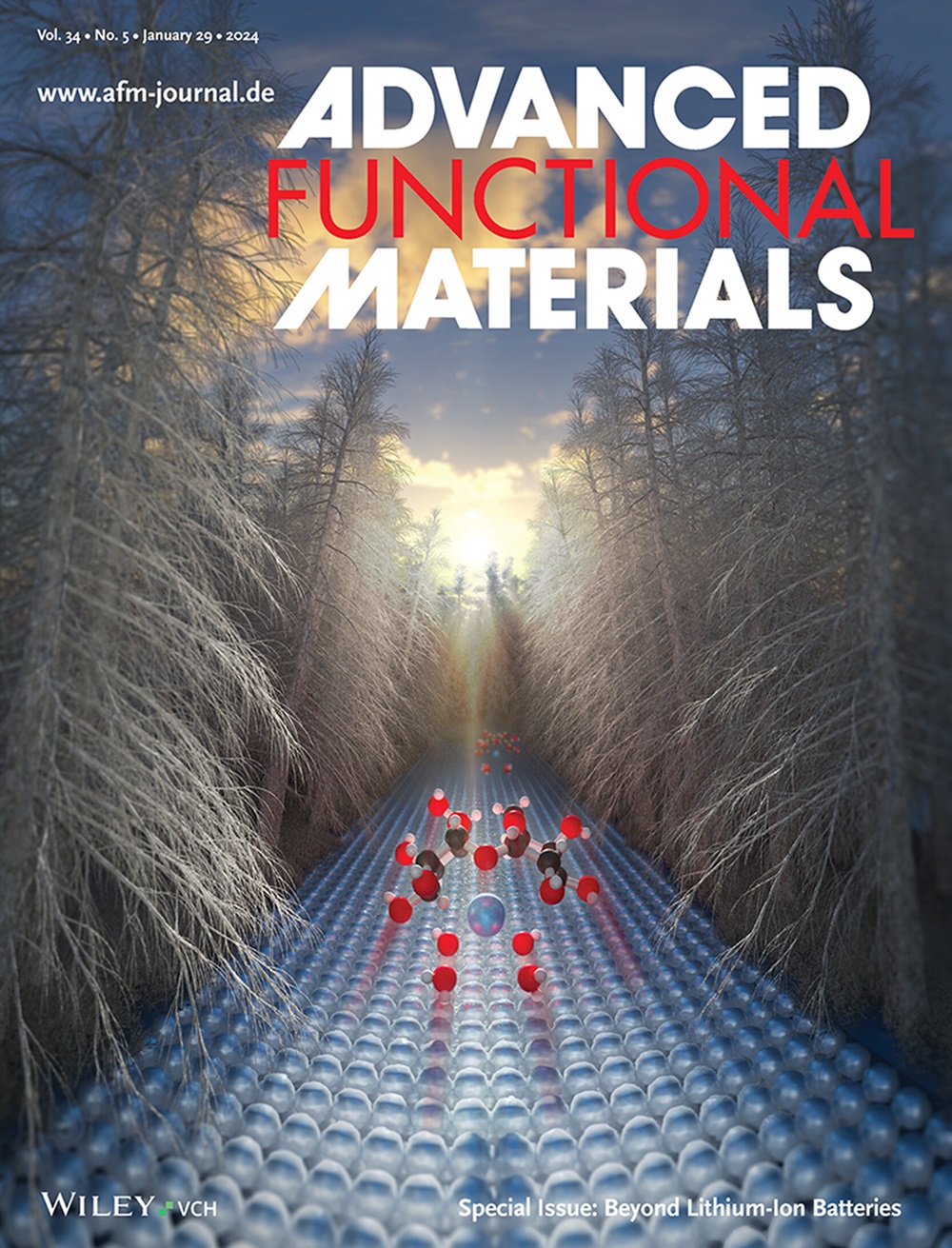Thiol-Modulation-Induced Mesoporous Nanosheets with an Alloy/Intermetallic Heterophase for Efficient Electrochemical Ethylene Glycol-Assisted Water Splitting
IF 18.5
1区 材料科学
Q1 CHEMISTRY, MULTIDISCIPLINARY
引用次数: 0
Abstract
Ligand modification has been widely utilized to tune the coordination environment of active sites in noble metal-based electrocatalysts to enhance their catalytic activity and selectivity. However, the ligand-induced structure transition of the catalyst and its effect on performance is not clear. In this study, a thiol modification strategy is developed to prepare sulfur-capped mesoporous PtPbBi nanosheets (S-PtPbBi MNSs) with an alloy/intermetallic compound heterophase and inhomogeneous tensile strain (≈3%). The obtained S-PtPbBi MNSs exhibit excellent electrocatalytic performance for ethylene glycol oxidation reaction (EGOR), achieving a Faradic efficiency of up to 92% in converting EG to glycolic acid. In EG-assisted electrochemical water splitting, S-PtPbBi MNSs only require a low cell voltage of 0.60 V to achieve a current density of 10 mA cm−2. The anion exchange membrane electrolyzer utilizing S-PtPbBi MNSs catalyst can drive a current density of 500 mA cm−2 at 1.63 V, along with exceptional stability for 200 h. Density functional theory calculations reveal that thiol modification facilitates the adsorption of reactants and enhances the electron transfer between the catalyst and key intermediate. This work provides deep insights into ligand modification-induced construction of novel catalysts and creates new opportunities for small molecule-assisted water splitting for efficient production of hydrogen.

硫醇调制诱导的合金/金属间异相介孔纳米片用于乙二醇辅助水的高效电化学分解
配体修饰被广泛用于调整贵金属电催化剂活性位点的配位环境,以提高其催化活性和选择性。然而,配体诱导的催化剂结构转变及其对性能的影响尚不清楚。在本研究中,采用巯基改性策略制备了具有合金/金属间化合物异相和非均匀拉伸应变(≈3%)的硫包覆中孔PtPbBi纳米片(S-PtPbBi MNSs)。所制得的S-PtPbBi MNSs在乙二醇氧化反应(EGOR)中表现出优异的电催化性能,将EG转化为乙醇酸的法拉迪效率高达92%。在eg辅助的电化学水分解中,S-PtPbBi MNSs只需要0.60 V的低电池电压就可以实现10 mA cm−2的电流密度。使用S-PtPbBi MNSs催化剂的阴离子交换膜电解槽可以在1.63 V下驱动500 mA cm - 2的电流密度,并具有200小时的优异稳定性。密度泛函理论计算表明,巯基改性促进了反应物的吸附,增强了催化剂和关键中间体之间的电子转移。这项工作为配体修饰诱导的新型催化剂的构建提供了深刻的见解,并为小分子辅助水裂解高效产氢创造了新的机会。
本文章由计算机程序翻译,如有差异,请以英文原文为准。
求助全文
约1分钟内获得全文
求助全文
来源期刊

Advanced Functional Materials
工程技术-材料科学:综合
CiteScore
29.50
自引率
4.20%
发文量
2086
审稿时长
2.1 months
期刊介绍:
Firmly established as a top-tier materials science journal, Advanced Functional Materials reports breakthrough research in all aspects of materials science, including nanotechnology, chemistry, physics, and biology every week.
Advanced Functional Materials is known for its rapid and fair peer review, quality content, and high impact, making it the first choice of the international materials science community.
 求助内容:
求助内容: 应助结果提醒方式:
应助结果提醒方式:


